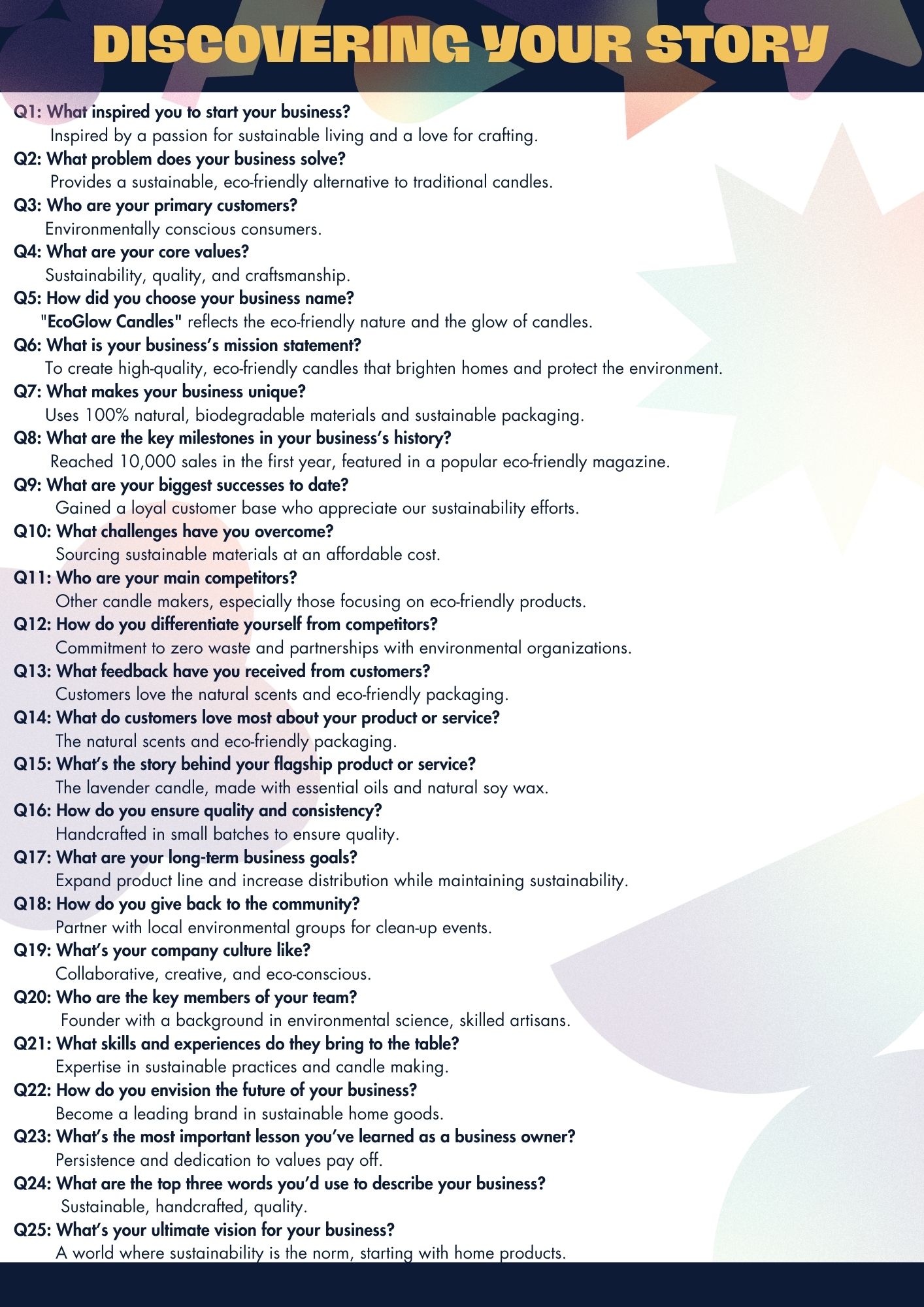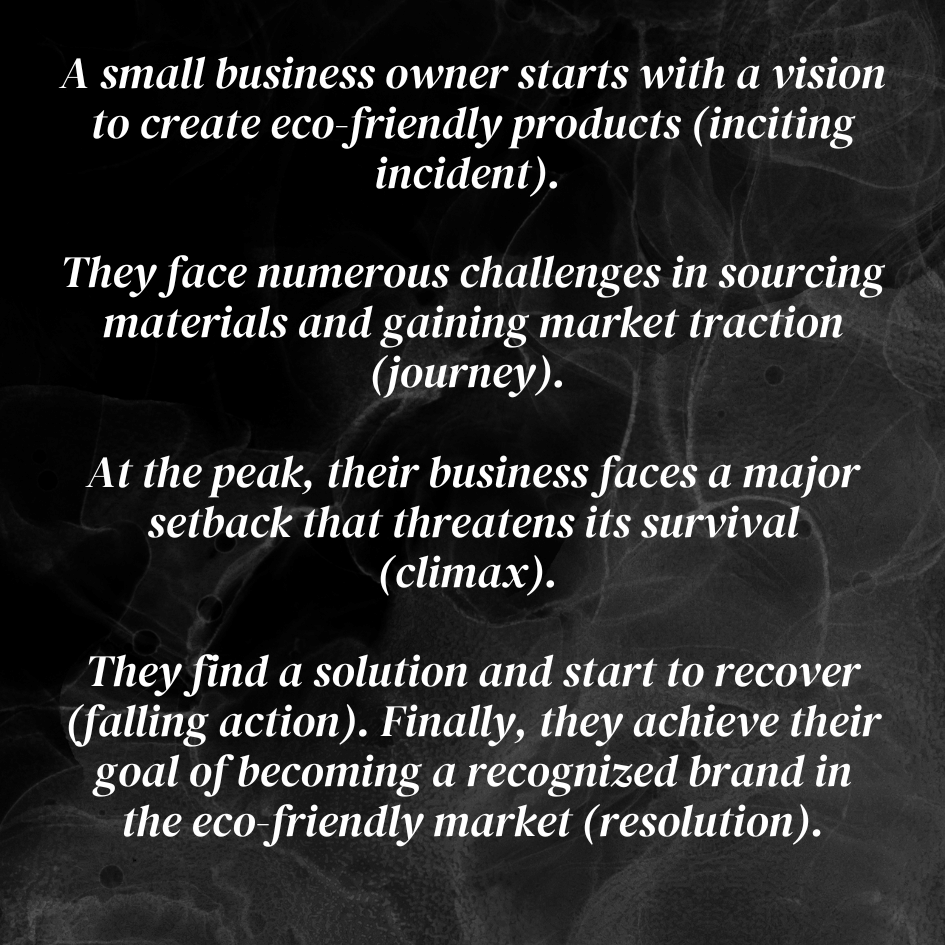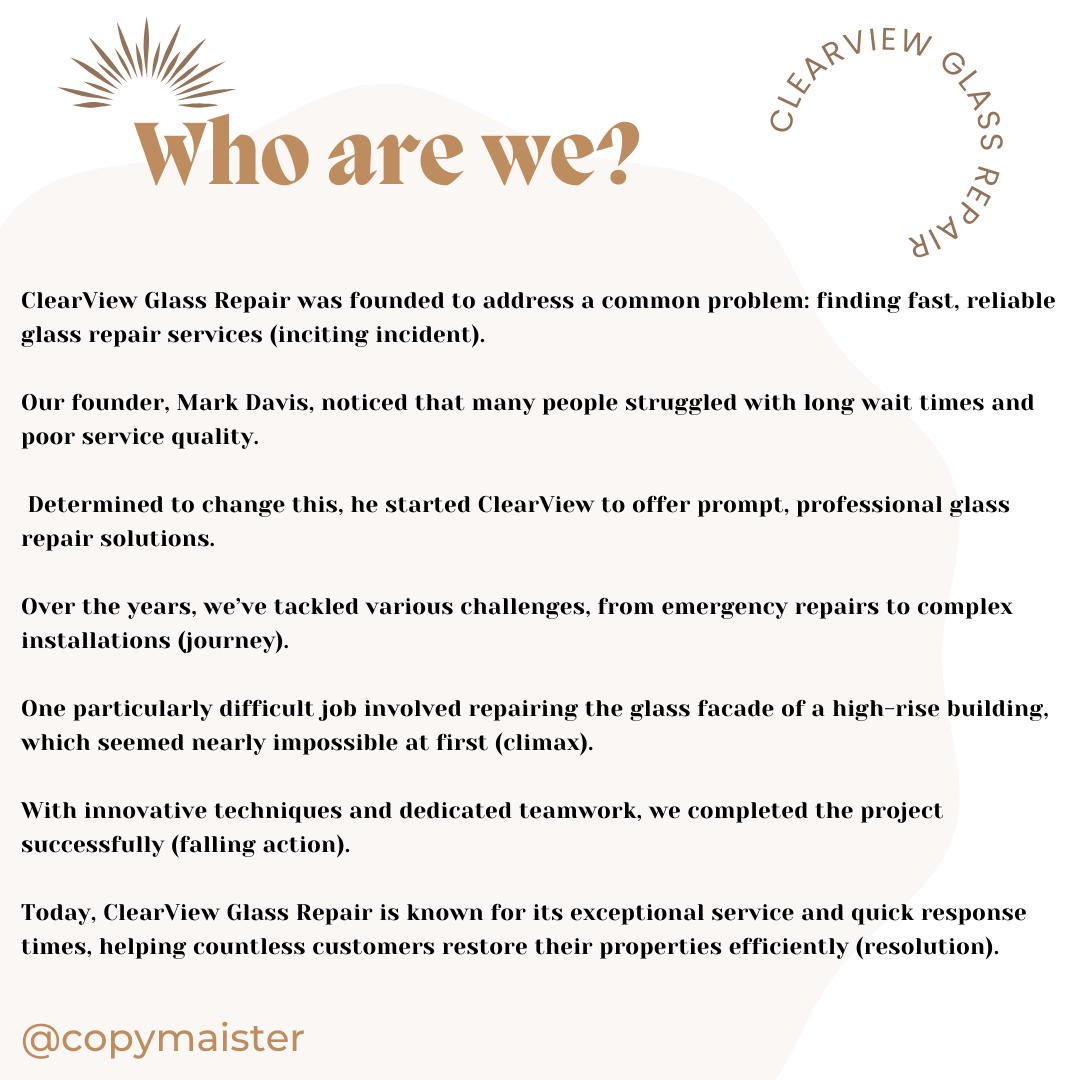Are you a small business owner or an entrepreneur struggling to write a business description that grabs the attention of your target audience?
Imagine you have to present your brand in front of your target audience and potential influencers. On this occasion, your competitors are also invited to present their brands.
What should you do to make a difference in this condition? You can only stand out if you have a powerful story of your brand that describes your business in a way that grabs attention and leaves a lasting impression.
In this guide, I will show you a secret weapon: a storytelling approach to create an attention-grabbing business description.
Using a storytelling approach, you can craft a business description that is clear, concise, and memorable.
After learning the Storytelling approach to writing business descriptions, you can use it in:
- Social Media Post and Portfolios.
- On your Website.
- Email Campaign.
- Your Elevator speech.
- Answering questions “What do you do?”.
In this guide, I will cover the complete process of storytelling for your business description. Here is the step-by-step flow of the guide:
- Brainstorming what makes your business unique.
- Write a Massey draft.
- Make it sticky.
- Edit it to sound awesome.
- Adapt your story.
So, are you ready now to embrace the power of storytelling? Let’s dive in.
The Power of a Core Story
The brand’s core story is a strong narrative that is not just about function and features. It helps to build an emotional connection with the audience, build trust and clarify your message.
Moreover, It helps your brand to stand out among large competition because, with the help of a core story, you make a narrative that encapsulates your unique value, mission, and vision in a way that gives your brand a feel that should be remembered. To craft a core story, there are following two steps to follow:
Step 1: Discover your unique story:
In the first step, dig deep and write those elements that make you unique, then turn those elements into a journey. Remember to highlight values and unique selling points.
Step 2: Make it Sticky:
To make it memorable, make sure it is concise and clear and engages your audience’s emotions.
Discovering Your Story
The first step to crafting a business story has to start with the information, but the information you gather must be relevant.
So, to get the correct information, I have crafted 25 questions and their answers as an example by taking a brand “Ecoglow candle”.
But before answering questions, let’s understand who our target audience is for this brand and what the goal is.
So, for the target audience, I have made 2 segments:
- In the first segment, I chose environmentally conscious people who value quality and sustainability.
- The second segment of my target audience is the investors who can invest in my brand.
My goal behind this exercise is to encourage people to invest in my company or buy my product.
So, after selecting the target audience and goal, please focus on the questions and answers I mentioned below for complete understanding.

So, after this practice, you will have gotten enough information by answering questions that will help you craft your story’s main message.
In order to craft the main message, there are 4 steps you should follow:
- Review all the 25 questions you have answered.
- Focus on the elements that help you to achieve your goals, such as (invest, buy, and hire).
- Pay attention to the aspects that resonate with who you are targeting.
- Lastly, ensure your message is clear, concise, and compelling.
Focus on the picture below where I have mentioned an example of the brand “Ecoglow candle” and how I have crafted the main message of the brand by following the above steps:

Write Your First Messy Draft
Now, let’s move ahead and discuss how you can craft your first draft in this step. You don’t need to worry about perfection.
Because the idea is all about just writing down something on a screen or paper, we want just to make sure we get that correct information in there.
So, let’s start with a basic story structure based on 5 steps:
- Inciting incident: It can be an event or a goal that encourages the main character to get rid of their comfort zone and start a new journey.
- Journey: Here, focus on the obstacles and various challenges the main character faces throughout the journey.
- Climax: It is all about the peak when the character is in high tension, and it seems everything has been lost.
- Falling Action: After the climax in this step, things have been improving gradually, which means the character overcomes the obstacles leading to the resolution.
- Resolution: In this step, it seems everything is perfect. The character achieve their goals and have learned valuable lessons.
Well, in a nutshell, for your better understanding, think about these steps:
At the start, the main character has an ultimate goal in their mind, so they start the journey to get there. During the journey, they faced lots of problems.
At one moment, they thought everything was lost, but they would not give up. ultimately, there was some kind of resolution. Everything was getting better. They learned valuable lessons and finally achieved their goals.
Example

After understanding the basic story structure, let’s move to the next step:
Use the Idea of a Basic Story Structure to Write Your Description
First, select your main character. It can be:
- Customer: If you define the customer as your main character, craft a description explaining how your product or service solves their problem.
- Investor: If the investor is your main character, your description should revolve around why someone should invest in your business.
- Yourself: Set yourself as a main character and show how many challenges you have faced to achieve ultimate success.

After understanding the main character selections, let’s move to the next step, where you can understand the type of story you can choose for your business description.
Types of Story
The Expert Storytelling
In expert Storytelling, mention your industry knowledge and expertise. In a simple word, present yourself as a knowledgeable guide in front of your target audience.
Example Company name (TechSavvy Solutions):

The My company will change the Storytelling
In this Storytelling, paint an inspirational picture of the final end goal: how your company creates a significant positive impact on the world.
Example:

The Humble Beginning Storytelling
In this storytelling, share the challenges overcome in launching the business and how you started from the ground up.
Example:

The Problem Solver Storytelling
This storytelling shows how their lives get better by using your product or service.
Example:

After understanding the types of storytelling and how you can write your first draft, let’s move to the next step:
Make it Sticky
After writing your first messy draft, you now have to understand how to refine it. So, in order to improve it, the first thing you have to make sure is that it is sticky. In this section, we are going to learn how to make your story draft sticky.
Two elements will help you to make your story sticky:
- Emotions.
- Personality.
Let’s discuss each one individually.
Emotions
It is the way you want your target audience to connect personally with what you are saying, and it is the best way of storytelling. Incorporating emotion in your story effectively makes your story more impactful and relatable.
Personality
By incorporating personality, you ensure that you are using your own unique voice. This helps you avoid stuffy or corporate sounds. It makes your story humanized and approachable and helps you build a stronger connection with your target audience.
Let’s combine emotions and personality and write a story:
Company Name: Heart & Soul Fitness
What You Do: We provide personalized fitness coaching and wellness programs.

Four Common Writing Mistakes and How to Fix Them
After understanding how to make your business story sticky, let’s discuss how you can refine your business story further by avoiding these four common mistakes.
- Use of Jargon: Avoid using complex words, such as industry-specific terms, that make your description inaccessible and confusing. Keep it simple so that everyone can easily understand.
- Repetition of the same words: Repetitive language makes a business story less engaging. To avoid repetition, try not to repeat the same words. Use synonyms and rephrase sentences.
- Use of too many words: Keep your business story concise and avoid unnecessary words, as this can make your story less impactful. How to Fix: Be concise. Remove any words that don’t add value to your message.
- Making long, Complex sentences: Do not write long sentences because they make the business story complex and difficult for the reader to digest. Break your story into short paragraphs to improve readability.
Conclusion
So here we are now that the guide has ended. I hope you are now equipped with the tools to transform your own business details into a narrative, from a jumble of ideas into an attention-grabbing story that resonates with your audience.
In this guide, we have walked through key techniques and steps. With their help, you can create your own business story.
You have learned the basics of how to gather information with the help of answering 25 questions.
After that, using that information, you can craft the first messy draft of your business story and refine it by making it sticky with the help of emotions and personalization.
In the end, I have guided you to avoid four common mistakes in making attention-grabbing business stories, which include avoiding jargon, repetition of words,
Use too many words, and make long, complex sentences.
By following the guidelines, tips, and techniques I have shown, you can develop your business description to attract customers, investors, and partners.
If you have any confusion related to any point, do not hesitate to send me an email. I will definitely help you.


What a great article—both informative and fun to read!
The website is top-notch and very user-friendly.